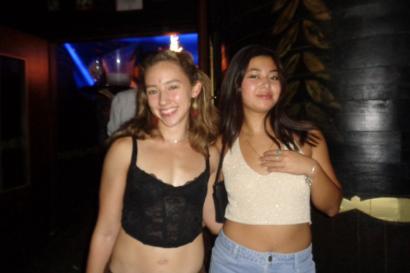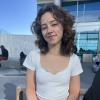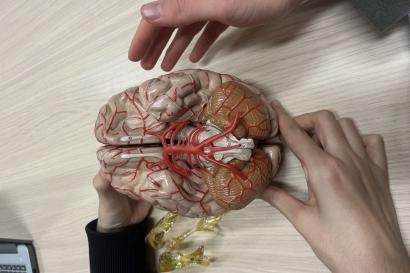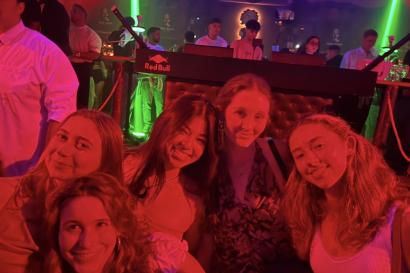For American art lovers studying or traveling in Europe, the instinct to visit museums full of works by traditional famous Western painters, sculptors, and designers is strong. While it is obviously worthwhile to make use of these opportunities and to see these famous works in person… it is not necessary in Granada to go to a museum to see beautiful artwork. All you need to do is walk through the streets and see the local graffiti, the street art, the murals. The public art on display in this city is abundant and maravilloso, in alleys and on the walls of discrete buildings. It seems that there are these displays in every little rincón, in every neighborhood you walk through; separate from the main streets crowded with people, and reserved for the more intimate spaces of small passages and walkways. Ranging from complex images with seemingly heavy messages to convey, to minimalist symbols with more ambiguous meanings, there is no predicting the type of emotional reaction that they can provoke.
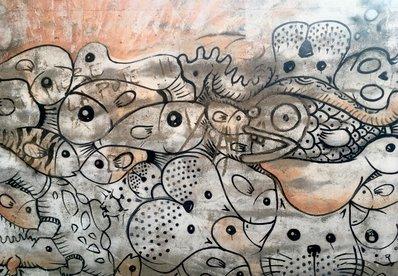
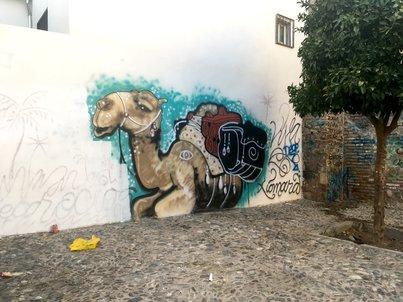

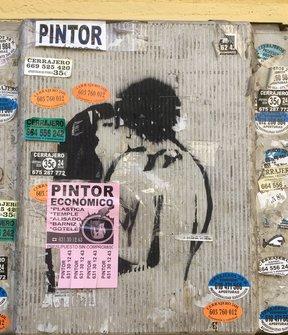
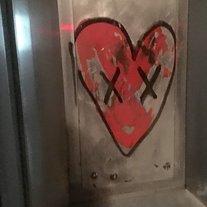
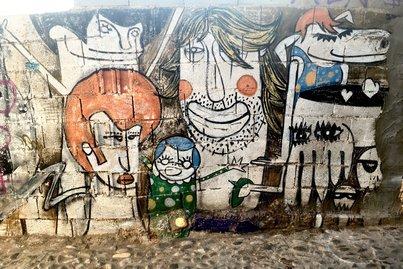

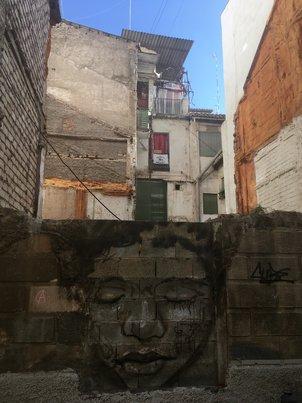
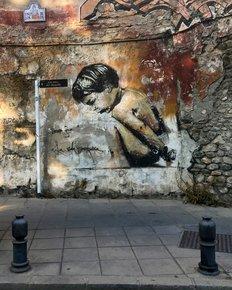
A name to know when discovering graffiti in Granada is el niño de las pinturas, also known as Raúl Ruiz. *Born in Granada, Ruiz has produced and left his mark on cities all over Spain as well as other countries around the world, such as Portugal, the UK, France, Italy, Argentina, Venezuela, and Mexico to name a few. It is understandable when seeing his works why he has risen to such success – his stunning productions encourage intense, pensive reflection, often containing figures combined with a word or a phrase. For example, pictured below is a painting by Ruiz with two people, one appearing more youthful and the other elder, engaged in different activities. Between them in mechanically loose, stenciled font is written “estamos,” which is actually the easiest word in the pintura to read. Characteristically in the works of el niño de las pinturas, there are words which are too sun-faded or worn away with time to be legible. So while there are traces of the rest of the phrase on either side of the figures, this is the image which stands out the most to me while walking along the street.
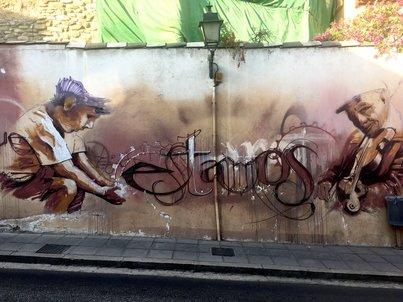
My interpretation of this lovely piece is a focus on the combination two opposites, the unexpected pairing of people working together despite their differences. I am sure that others probably have different interpretations of this specific work, and that is what I LOVE about this type of public art. The ability to hold ambiguous meanings. For the artist to give the viewer the liberty to look and to take away from the experience any interpretation at all. I think a lot of the public art that I see here has this effect. Because of this, I feel inspired and driven to understand more about what is being communicated and why, and it’s honestly very comforting – I feel more like I am in a way hearing, in a language that is less restrictive and more clear, what is being said and therefore connecting to the culture specifically in Granada.
~
On that note, I have spent almost an entire month now becoming accustomed to living in this wonderful place. This thought is hard to believe, for a month of my four-month-experience is ALREADY GONE, and also because it feels like I have been here so much longer. I have traveled to Cabo de Gata-Níjar National Park, swam in the Mediterranean Sea and hiked in blistering dry heat. I went to the historic mountain-city of Ronda and saw some of the most beautiful views I have ever seen. I went to Sevilla and saw my first live flamenco performance (wowwwww. Just wow), and felt pure joy after an amazingly informative tour of the Alcázar de Sevilla because I followed along with everything the tour guide told us in Spanish. I started taking a class at La Universidad de Granada, in the school of fine arts and have thus far managed to get by, despite my professor not knowing any English, solamente Español. I have had so many breakthrough moments in being able to understand and communicate in another language, and have met and gotten to know countless wonderful human beings from all over. I feel incredibly lucky, exhausted, and also invigorated because I have so much left to do and to learn while I am here.
I painted the obrita at the top of this page in my sketchbook for my acuarela class. It was inspired by all the public art that I have seen here in Granada, each square a little snapshot of different pieces and themes that I have seen. I think that they make an interesting little story when put together – you can interpret them however you want! I hope you like!
Thanks for letting me geek out about the public art in Granada. Stay tuned for my next blog post sometime in the middle of octubre, I will hopefully have some more sketches and paintings to share with you.
Gracias por leer,
~Noah
*PD. This is a great book that I checked out of the IES Abroad center library if you want to know more about el niño de las pinturas:
El Niño De Las Pinturas. A Través Del Muro. Sant Vicenç De Castellet, Barcelona: Spray
Planet, 2007. Print.
también…
http://www.elninodelaspinturas.es/
:^)

Noah Heil
<p>Hello! I am the type of person who always likes to keep busy and having fun. I am a Minnesota native and go to school about a 45 minute drive from where I grew up. Recently, my summers have been spent traveling around in the United States; for the last two years, I have spent the entire summer in Vermont working as a camp counselor and as an art teacher. I love being surrounded by wilderness and natural beauty, with quick and easy access to more 'urban' life and culture nearby. I love working with and mentoring kids, particularly having the opportunity to get them interested and invested in visual arts. Aside from these recent happenings in my life, I like dancing and singing in the shower, meeting new people, and making things!</p>





